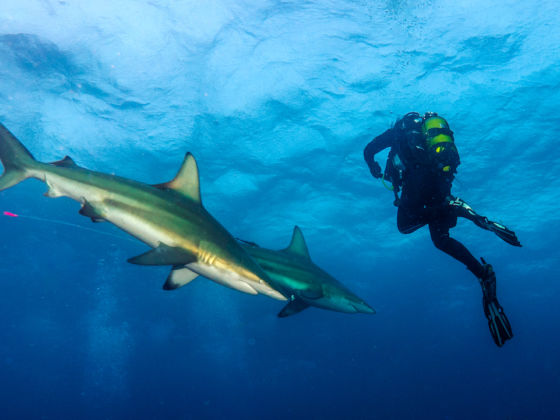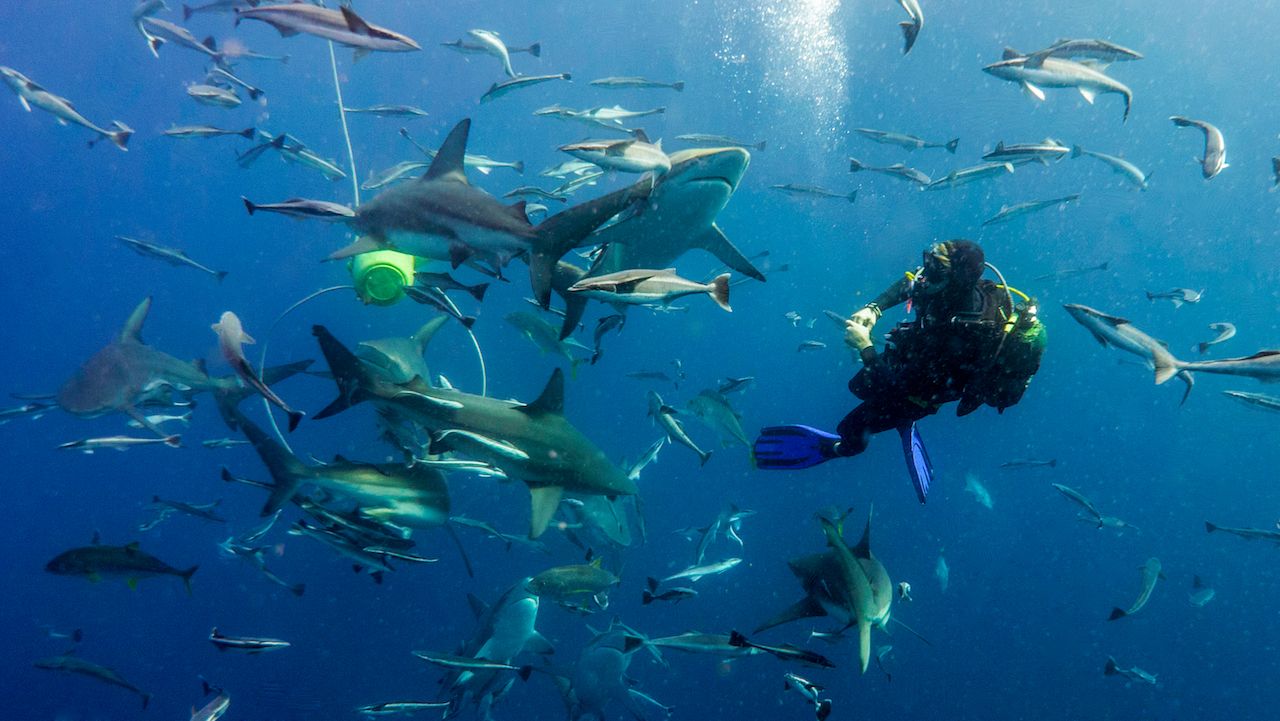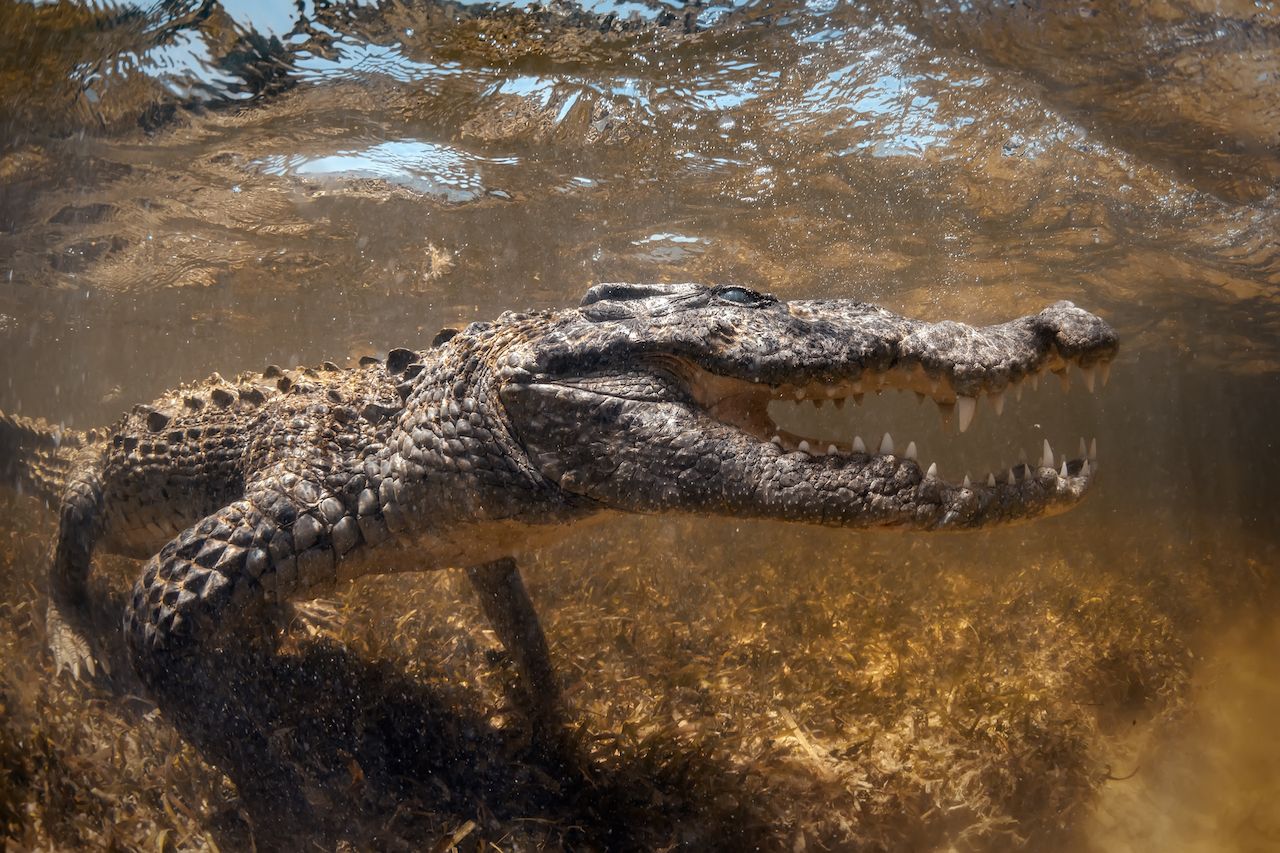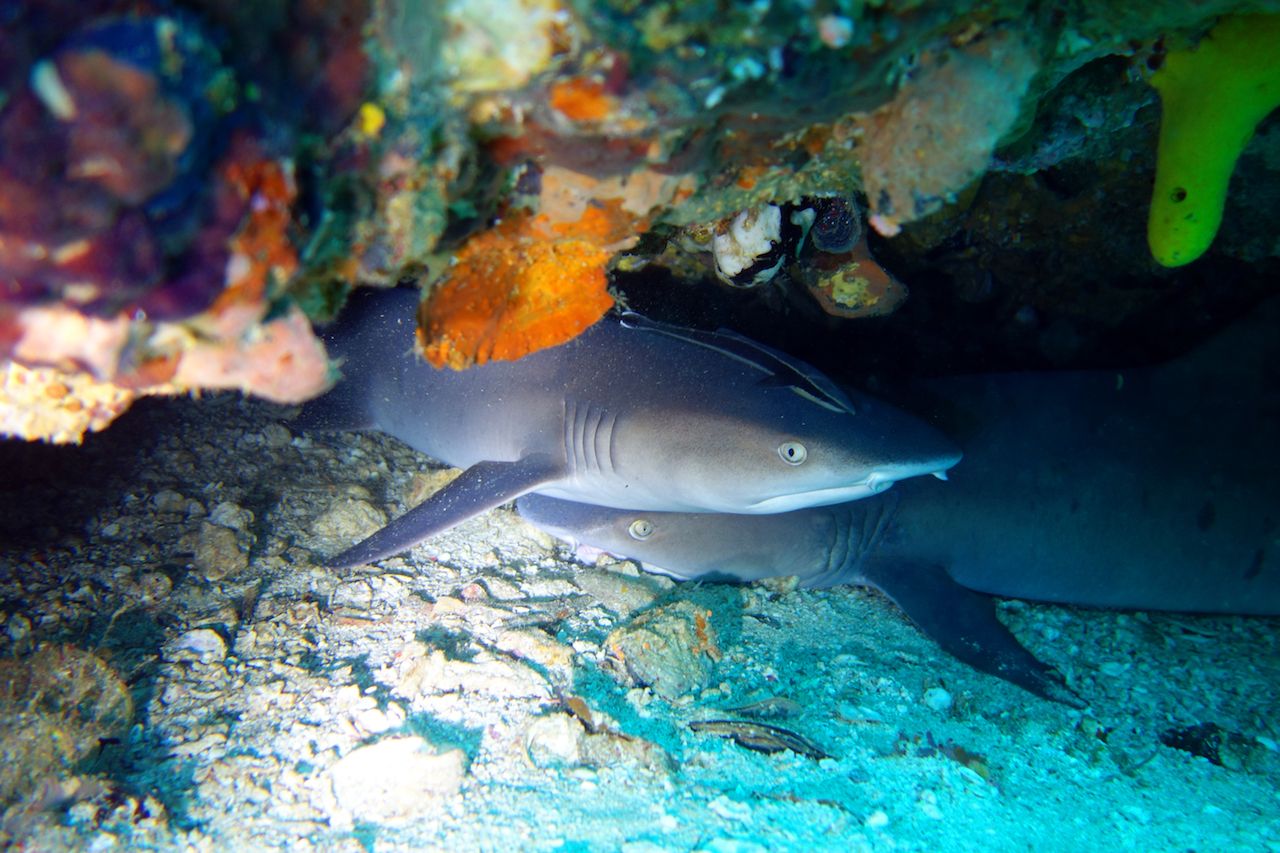Over 70 percent of our planet is covered by ocean, so it’s no surprise that there are thousands of incredible scuba diving destinations around the world. But most divers never stray far from the most popular and well-known hotspots. This means that the most famous places, from Mexico to the Philippines, often feature boring dives, packed boats, and congested sites. It’s time to change that. Read on for our top scuba diving destinations that you’ve never heard of, and start planning the diving trip of your dreams — minus the tourist crowds.


5 Incredible Scuba Diving Destinations You've Never Heard Of
1. Aliwal Shoal: uncaged shark dives

Photo: Izen Kai/Shutterstock
Plenty of divers visit South Africa for its incredible shark diving. Yet few visitors make it past caged immersions in Cape Town. The Aliwal Shoal is just a quick trip up the eastern coast and offers wrecks, reefs, and up-close encounters with sharks. Plus, this area boasts plenty of marine megafauna like manta rays and dolphins.
Every year between July and November, thousands of sand tiger sharks, locally known as “raggies,” gather in the Aliwal Shoal to mate. During these months, it’s common to spot 15 to 20 sharks on every dive. And, you won’t spend your time sitting in a cage. Best of all, the most impressive dive sites like Cathedral and Raggies Cave are suitable for divers of all skill levels.
If you’re looking for a more adventurous underwater experience, the Aliwal Shoal also offers baited or chummed shark diving. You can expect to encounter tiger sharks, oceanic black tips, bull sharks, and duskies in a single immersion. And, nearby wrecks like the SS Nebo and the Produce are perfect for swimming into, or “penetration” in diving parlance.
2. Banco Chinchorro: freshwater crocodiles

Photo: Alexander Machulskiy/Shutterstock
While most divers in Mexico’s Yucatan flock to popular sites around Cancun, Cozumel, and Playa del Carmen, some of the region’s most exciting diving is found further south. Just off the coast of Chetumal, near the border with Belize, lies Banco Chinchorro. This coral atoll is the largest in the northern hemisphere, and it’s jam-packed with stunning and seldom-visited dive sites.
In addition to high-speed drift dives, plunging walls, and thriving reefs, divers in this region can explore multiple shipwrecks including several Spanish Galleons. In fact, Banco Chinchorro is known as the “ship cemetery” thanks to these spooky dive spots. Most of the sunken hulks are best left for advanced divers, but a few are appropriate for newbies, too. Keep in mind that you should never enter a shipwreck without proper training and certification.
If you’re looking for even more of an adrenaline rush, Banco Chinchorro still has plenty in store. This is one of the only places on planet earth where divers can swim alongside wild saltwater crocodiles. These prehistoric giants are typically found resting in the region’s mangroves and turtle grass. They make surprisingly easy subjects for underwater photographers.
3. Aqaba: sharks and a sunken tank

Photo: Shahar Shabtai/Shutterstock
Egypt’s Red Sea attracts thousands of visitors per year. Neighboring countries like Jordan, however, offer diving of the same caliber, minus the day-boats filled with tourists. In recent years, Aqaba has been growing in popularity thanks to its flourishing reefs, wrecks, and off-the-beaten-path vibes. But with perks like easy shore access, small dive groups, and low prices, this up and coming destination won’t stay a secret for much longer.
If you’ve never been shore diving, Aqaba is an excellent place to give it a try. Pickup trucks or vans take you to the dive sites, and most sites offer super simple entrance and exit points. With no big waves or surge, you just suit up and walk straight into the water. The reef also begins close to shore so you won’t have to worry about any long surface swims.
Aqaba is home to a number of shipwrecks, appropriate for divers of all certification levels. In fact, a sunken army tank, one of the region’s most famous sites for photographers, is even suitable for the Discover Scuba course. Other, deeper wrecks like the Cedar Pride and Taiyong are perfect for advanced and even technical divers.
4. Malapascua: thresher sharks

Photo: Whatafoto/Shutterstock
If the Philippines aren’t on your bucket list, you might not be a diver. This archipelago is made up of thousands of islands, and while most of them offer outstanding diving, others have become crowded tourist traps. These days, divers in the know venture a bit further off the beaten path to Malapascua, a small island off the coast of Cebu.
While there is plenty to see underwater in Malapascua, thresher sharks are the stars of the show. Early morning immersions allow divers to come face to face with these graceful predators as they rise from the depths to visit nearby cleaning stations. Shark encounters on Malapascua are passive, using no chum or bait. Divers simply relax on the reef and watch as the sharks slowly cruise by in the current.
The other main highlight while diving in Malapascua is a day trip to Gato Island. This is an excellent place to spot both macro and megafauna with plenty of dive sites to choose from. The island is also a breeding ground for sea snakes, which make appearances on nearly every immersion.
5. Ambon: small, beautiful creatures

Photo: fenkieandreas/Shutterstock
It’s no secret that Indonesia is home to some of the planet’s best muck diving and macro. Most underwater photographers and lovers of the small stuff head straight to the island of Sulawesi to dive the Lembeh Strait. But if you’re hoping to comb through silt and rubble for some of the planet’s strangest creatures, consider a trip to Ambon, in the Banda Sea. The diving is just as interesting, with fewer visitors and lower prices.
If you’ve never heard of Ambon, don’t feel bad. It’s not exactly on the tourist radar. It will be soon, though. Dive sites in this region are literally crawling with fascinating finds like mimic and blue-ringed octopuses, frogfish, and a stunning array of nudibranchs. Some of this area’s best sites are accessible from shore, and plenty of buddy teams dive unguided. That said, you’ll want to hire a local spotter if you don’t have a sharp eye.
While the small stuff is this region’s number one attraction, Ambon has plenty more to offer. Plummeting walls, colorful reefs, and one-on-one encounters with large marine wildlife sweeten the deal. Farther-flung dive sites are known for run-ins with whale sharks and schooling hammerheads. There are plenty of wrecks to explore here, too, some of which are even open to exploration by beginner divers.